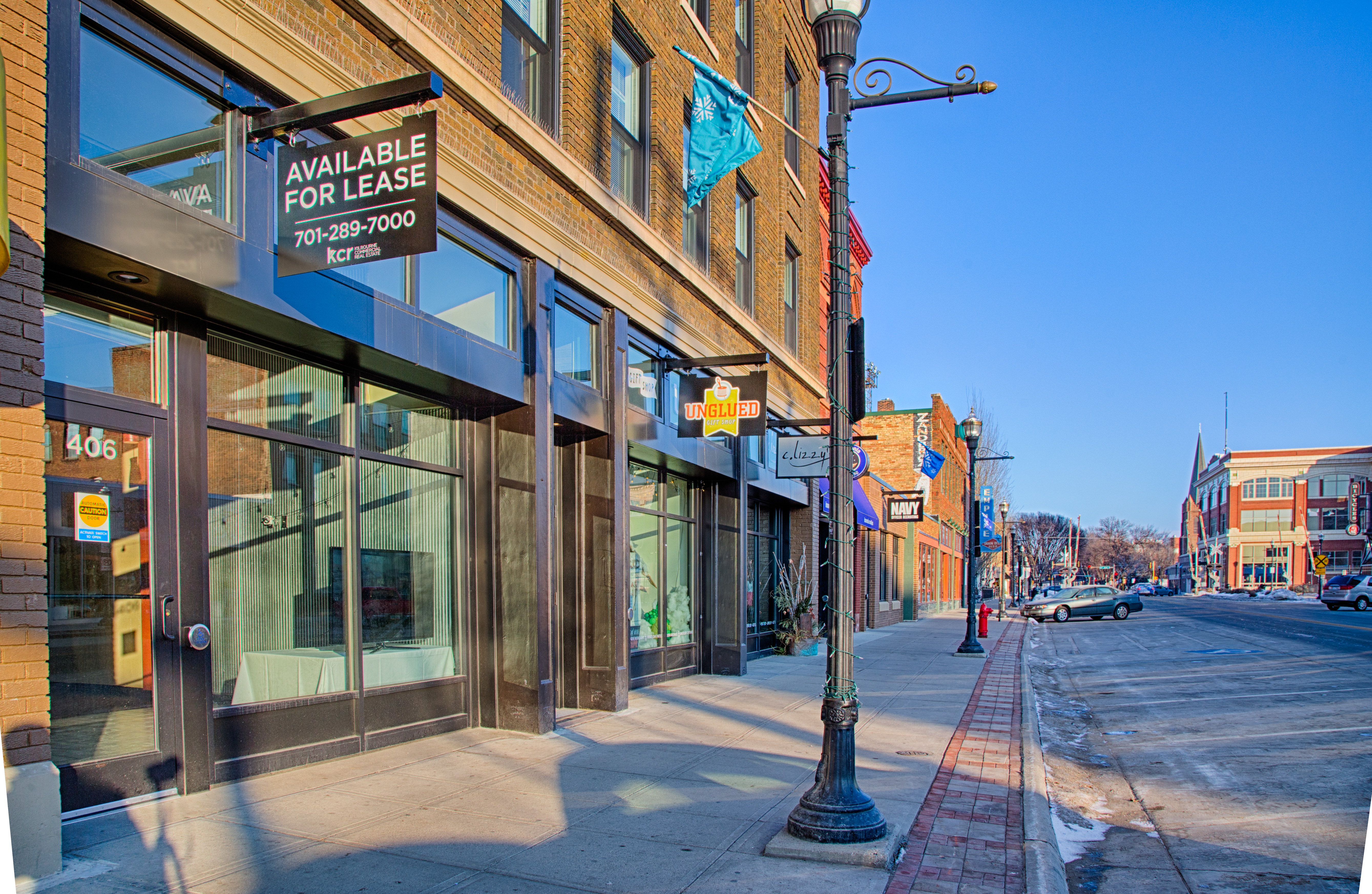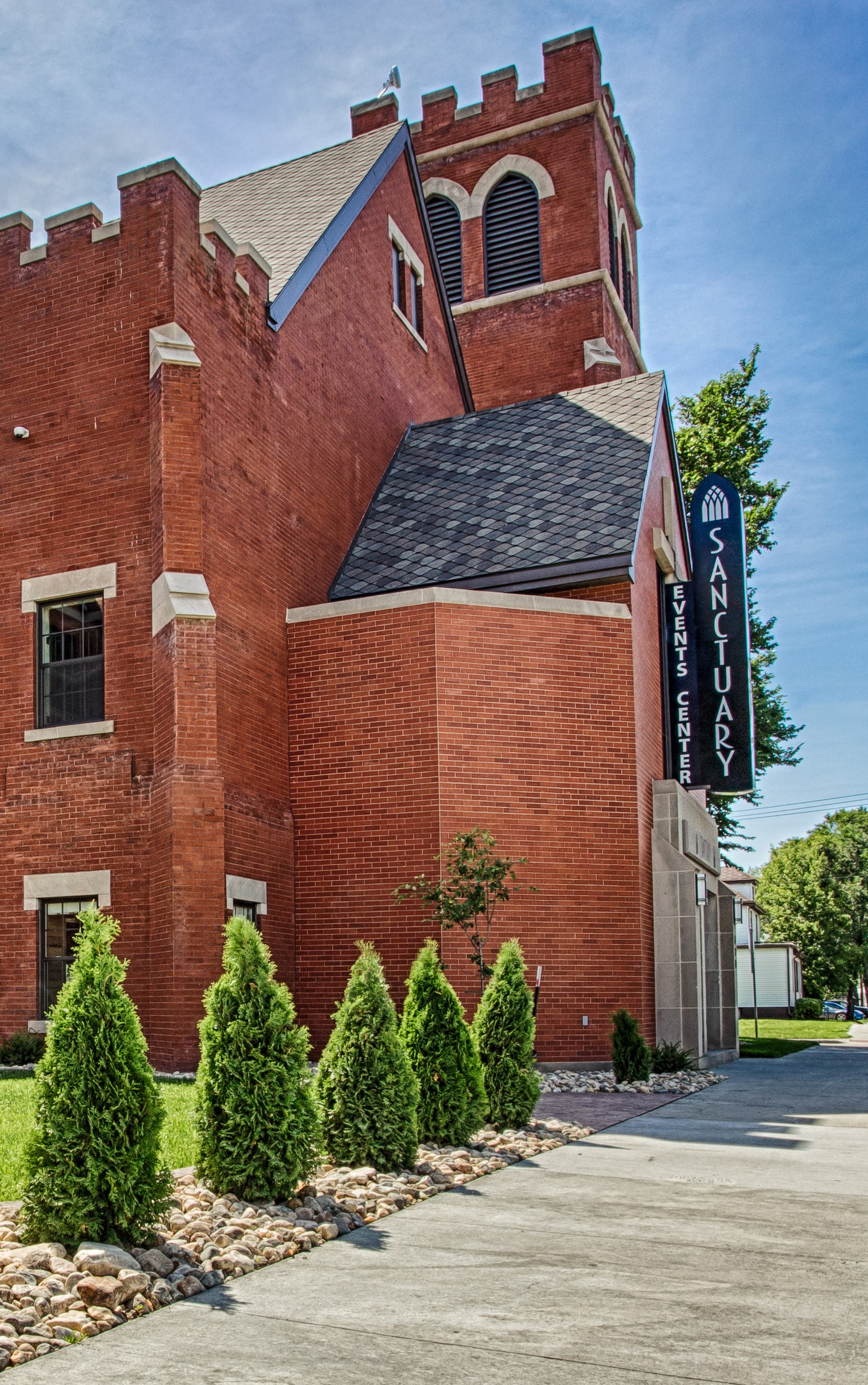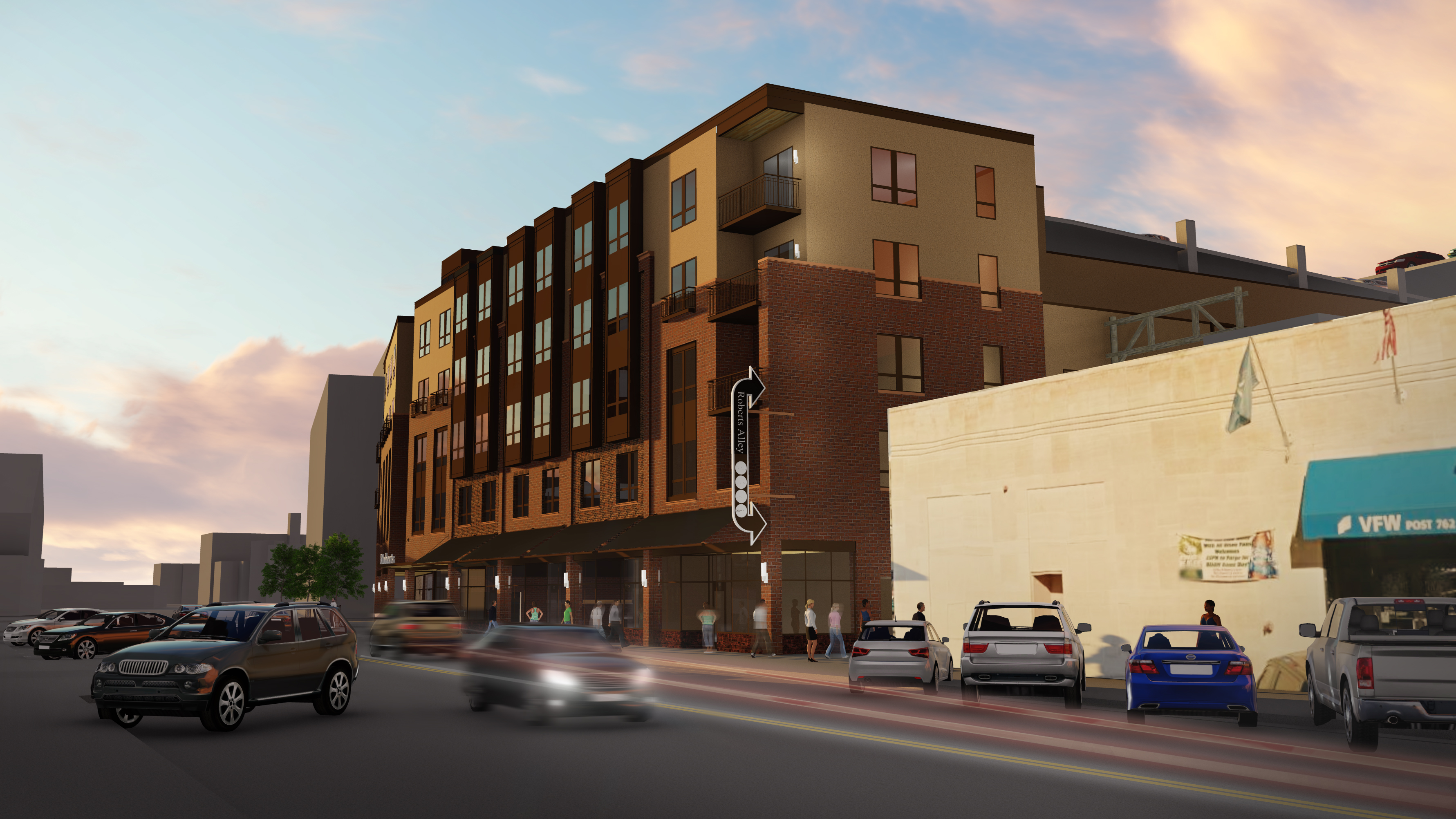
Signs have a big job to do. They tell the audience what’s inside a store with little, to no words. Signage on a storefront is a component that can often make-or-break a business. Bob Gibbs, an expert on Urban Design, says in his book, Principles of Urban Retail Planning and  Development, “Nothing contributes to strong retail sales and an attractive downtown as much as well-designed and properly scaled signage.”
Development, “Nothing contributes to strong retail sales and an attractive downtown as much as well-designed and properly scaled signage.”
Signs need to be personalized for the location and the size of the building they’re mounted to. There are many types of signage, and although they all aim to do the same job, the best downtown signs are designed with customer movement in mind.
The renovation of the Lowman-Hadeland storefronts on the 400 Block of Broadway in downtown Fargo, was completed this fall. It included the addition of blade signs, projecting signage that is double-sided and perpendicular to the building extending 3-4 feet outward as seen in the photo. This type of signage is designed to increase the ease of visibility for people in cars. Given that a driver has only a second or two to notice a store, a properly designed sign can positively impact the business’s sales.
 Projecting signs also tend to “pull” pedestrians down the sidewalk. Environmental psychologist Paco Underhill says, “The best sign in either case is one you can read fast and is positioned so you can read it while moving.” When people have to slow down or stop to read a sign that is too small or too many words, signs fail.
Projecting signs also tend to “pull” pedestrians down the sidewalk. Environmental psychologist Paco Underhill says, “The best sign in either case is one you can read fast and is positioned so you can read it while moving.” When people have to slow down or stop to read a sign that is too small or too many words, signs fail.
Pedestrians shouldn’t have to decide between reading a sign and watching where they are going when they walk down the street. With contrasting colors, large lettering, and proper positioning, walkers can see the retail and restaurants ahead of them with little to no effort. Signs stimulate curiosity and diversity in downtown spaces.
Sometimes, blade signs are three-dimensional and are designed to look like a specific thing or take a specific shape. For example, the Fargo Theatre, White Banner Uniform, Sanctuary Events Center and many others in downtown Fargo all have shaped signs.
Underhill says that “on the road, we use a vocabulary of icons, the universal language that tells us what we need to know without words.” An arrow, a fork, a spoon, or a gas pump can tell the customer about the building without any letters. Blade signs also add character to downtown, giving the area a unique identity.
Blade signs can be helpful to separate ground floor retail with businesses on the upper floors of buildings, too. Gibbs says that alley businesses, like Robert’s Alley in downtown Fargo, should use blade signs on the corners of main streets to show pedestrians what is located down the alleyway. As seen in the picture, corner signs are typically vertical and are no more than 3 feet wide.
Kilbourne Group considers all of these design elements when deciding what type of signage to attach to new developments and renovated properties. Size, shape, color, and lighting on signs can dramatically influence the street identity and atmosphere. Catering to pedestrians and vehicles with blade signs enhances visibility and can capture the attention of new customers on the street or the sidewalk.
More
Great storefronts mean vital places, By Public Square, A CNU Journal